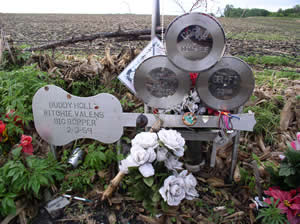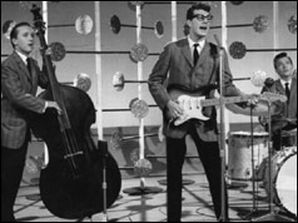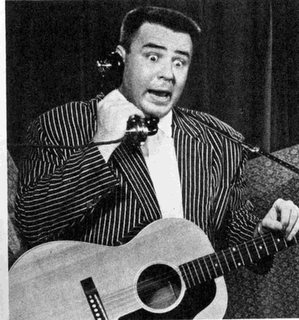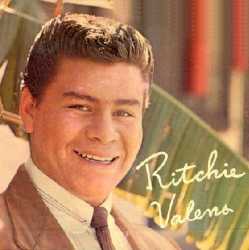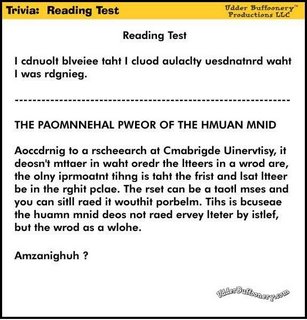COMPETITION V. DISCRIMINATION
How Jackie Robinson Desegregated America
Perhaps the least-learned lesson of the saga of Jackie Robinson is that competition can transform self-interest into an engine for racial fairness.
by STEVE SAILER
[This was the cover story of the April 8, 1996 issue of National Review.]
FIFTY years ago, on April 18, 1946, Jackie Robinson broke organized baseball's color barrier with a characteristic bang, homering and scoring four runs in his historic first game for the Brooklyn Dodgers' top farm team. This anniversary will no doubt unleash a wave of media meditations, since it combines the two national pastimes of the American male intellectual: denouncing racism and waxing nostalgic over the Brooklyn Dodgers. Spike Lee is preparing The Jackie Robinson Saga, and I'm sure Stephen Jay Gould will favor us with his thoughts.
Yet, beyond the obvious platitudes, baseball's long struggle over race can yield some surprising perspectives on our national predicament. The Robinson epic is generally lumped in with the 1954 Brown decision against segregated public schools and the 1964 Civil Rights Act outlawing job discrimination. Yet two crucial differences stand out. 1) The integration of organized baseball preceded the civil-rights revolution, and in reality baseball helped make later reforms politically feasible by giving white Americans black heroes with whom to identify. 2) Government had almost nothing to do with this triumph of the competitive market. Baseball owners finally realized that the more they cared about the color of people's money, the less they could afford to care about the color of their skin.
It's ironic that the hallowed civil-rights revolution owed so much to something as seemingly trivial as pro sports. Yet, without this business of producing heroes for public consumption, whites might never have cared enough about blacks to be bothered by racial injustice. It's not the most noble trait of human nature, but we tend to be more outraged by minor slights to winners (note the endlessly recounted tales of the indignities Robinson endured) than by mass atrocities against downtrodden losers.
That competitive markets make irrational bigotry expensive -- not impossible, but costly -- was first formally demonstrated in 1957 by University of Chicago economist Gary Becker (the 1992 Nobel Laureate), and in the four decades since has barely gained a toehold in conventional thinking. Let me be clear: this idea does not pollyannaishly presume that white people (or any other people) are motivated by disinterested good will. It merely assumes that if forced to by competition, people will hire whoever makes them the most money. Don't forget, though, that we humans are always conniving to exempt ourselves from competition. The more we can insulate ourselves from the open market, the more painlessly we can then discriminate for kin and countrymen and against people we don't like. Baseball's often ugly history shows this clearly.
Back in the 1880s, when the term ``organized baseball'' reflected ambition more than reality, the general anarchy let a few dozen blacks play in integrated leagues. By the turn of the century, however, blacks had been utterly banished. Although liberal demonology would assume that the owners were the villains, the prime agitators for segregation were, as economic theory would predict, the white ballplayers. Cap Anson was the best known of the many white athletes who threatened strikes or violence against black rivals. The banning of blacks came up for a vote only once, in 1887 in the International League. Following many nasty anti-black demonstrations by white players, the owners of the six all-white teams outvoted the owners of the four mixed teams. Elsewhere, blacks were driven out by ``gentlemen's agreements.''
Why did all the owners, although often after some resistance, ultimately give in to rabble-rousing white players? Easing the slide into segregation was organized baseball's curious status as a sort of Portuguese man-of-war of economic entities -- in some ways an industry of independent competitors, in others a single enterprise. Baseball teams must agree upon how they will compete, and, while they're at it, it's always tempting to agree upon how they won't compete. Congress ratified organized baseball's collusive tendency in 1920 by exempting it from the Sherman Antitrust Act.
The team owners' ill-named ``gentlemen's agreement'' to discriminate against blacks closely resembles today's unspoken understanding among the presidents of another government-sanctioned cartel, our elite colleges, that they will all discriminate against whites and Asians. Both clubowners and college presidents chose to head off ugly incidents by pre-emptively caving in to racial activists. They then browbeat all their peers into closing ranks, lest a lone dissident spotlight their spinelessness.
When all teams colluded against blacks, each team could assure itself that it was no worse off competitively than if all hired blacks. Cartels often collapse quickly because of cheating, but it was easier to enforce a national ban on black ballplayers than on, say, black factory workers. A ballclub couldn't hide its black workers away inside the mill, but would have had to flaunt them on the road before hostile, even murderous crowds. JACKIE ROBINSON'S vast (and deserved) fame tends to make us assume that blacks and whites never played together before April 1946. In truth, as the supply of black baseball talent exploded after World War I, the demand for it could not be contained either. There were of course the Negro Leagues. By the 1940s they were booming, and their All Star game frequently outdrew the white version. More forgotten are the many venues outside the South where blacks and whites increasingly played together. 1) Collegiate athletics had been haphazardly integrated for decades. At UCLA, for example, Robinson starred in baseball, football, basketball, track, tennis, golf, and swimming. 2) The California winter baseball league was integrated, though not its individual teams. 3) In the Caribbean winter leagues, race meant even less. Many teams had black and white American stars playing in the same lineups, with few problems. 4) In the mid Forties, a Mexican mogul raided both the Negro and the Major Leagues to stock his summer Mexican League's integrated teams. (Among 18 big-leaguers heading south after the 1945 season was Dodger catcher Mickey Owen. Whether this increased competition for whites encouraged the Dodgers' owner, Branch Rickey, to plunder the Negro Leagues is unknown, but it certainly didn't hurt.) 5) Semipro ball, which was hugely popular before TV, was surprisingly integrated. For instance, in 1935, Bismarck, North Dakota, fielded an awesome team, half white, half black, lead by the fabled pitcher Satchel Paige. Soon, practically every town in the Dakotas boasted ``semipros'' lured from the Negro Leagues. 6) Barnstorming was the chaotic epitome of Disorganized Baseball, requiring only two teams willing to play and a crowd willing to pay. In many Midwestern villages, the annual athletic highlight was the arrival of a Negro Leagues squad to play the local semipros. 7) Each October the black Satchel Paige All Stars and the white Dizzy Dean All Stars barnstormed the nation together. (Predictably, the blacks won a sizable majority of these games.) During World War II, Paige could claim to be the highest-paid player in all of baseball.
In the liberal world-view, discrimination stems from prejudice, from ignorance of the actual talents of blacks. In organized baseball, the opposite was true. White Major Leaguers freely admitted that many blacks could have taken white players' jobs. Yet, somehow, this enlightened perception failed to make the white pros into ardent integrationists. Meanwhile, a number of owners and managers tried to cheat on their gentlemen's agreement. For example, many historians claim that the Washington Senators quietly broke the color barrier in the late 1930s by playing Cubans dark enough to have been banned as Negroes if they had spoken English.
There was strikingly little correlation between the rectitude of the man and his urge to integrate baseball. For example, among managers the most creative was the choleric John J. McGraw, a ferocious scrapper who won ten pennants. In 1901 he almost succeeded in smuggling a light-skinned black second baseman onto his team as a full-blooded Cherokee named ``Chief Tokohama.'' During World War II huckster Bill Veeck tried to buy the dreadful Philadelphia Phillies and stock them with Negro Leagues stars. Like all direct challenges, though, this was rebuffed by the autocratic Commissioner of Baseball, Judge Kenesaw Mountain Landis. After the Chicago Black Sox threw the 1919 World Series, the owners had restored faith in the game by appointing Landis, who was famed for his strict moral standards -- one of which was Segregation Forever. After the good Judge went to his reward in late 1944, the owners, hoping to lighten up, picked as Commissioner the Southern politician A. B. ``Happy'' Chandler. When Happy surprisingly indicated that he wouldn't veto black players, Branch Rickey set his plans in motion.
``Mahatma'' Rickey was as renowned as Landis for his righteousness (as Rickey tirelessly reminded his players while chiseling down their salaries). No one should look down upon Rickey, however; pursue his self-interest he certainly did, but with infinitely more intelligence and courage than his rival owners. (Today's elite colleges, for example, have yet to produce their own Branch Rickey, a school president brave enough to dump affirmative action.) Rickey chose Robinson because they had so much in common: both were Methodists who didn't smoke, drink, or chase women, and both were smart enough to know the historic importance of their undertaking. Most importantly, both were too competitive to back down.
Further undermining the naive presumption that breaking the color line was an act of progressive piety was the key role played by Rickey's favorite field manager, the little ferret Leo Durocher. Bonding the Mahatma and Leo the Lip was a shared passion for victory and money. During spring training in 1947, Rickey scheduled a series between the Dodgers and Robinson's minor-league team. He hoped that when the Dodger players saw Robinson's talents, they would demand his promotion. Instead, fearing for their jobs or those of their friends, they said nothing. But when some Dodgers from Dixie actively protested against Robinson, Durocher deflated their mutiny: ``I don't care if the guy is yellow or black, or if he has stripes like a f -- -- -- zebra. I'm the manager of this team, and I say he plays. What's more, I say he can make us all rich. And if any of you can't use the money, I'll see that you are all traded.''

WHAT lessons can we learn from this tangled tale? A few simple ones seem to leap out. The more greed and lust for victory, the less discrimination. The more competition between teams and businesses, the more cooperation between the races. In contrast, the more collusion, centralization, community standards, and concern for the feelings of people you know, the more bias. If we now look at the remarkable impact that the first few dozen blacks had on Major League baseball, we can confirm the Chicago School's theory that competition tends to make irrational discrimination self-defeatingly expensive. The 1946 World Series looked as if it would be only the first of many between the Boston Red Sox and the St. Louis Cardinals. Led by Ted Williams, the greatest hitter since Babe Ruth, the 1946 Red Sox had won an exceptional 104 games, losing only 50. The Cardinals, meanwhile, had averaged 104 wins per season during the four seasons that the young Stan Musial had anchored their lineup. Both leftfielders would long remain superlative hitters. As late as 1957 Musial led the National League (NL) with a batting average of .351, while Williams topped even that with .388, the highest average between the Roosevelt and Carter Administrations. Yet neither man ever returned to the World Series. Why not?
Largely because of St. Louis's and Boston's boneheaded bigotry. With Robinson apprenticing in the minors throughout the 1946 season, the Brooklyn Dodgers finished two games behind the Cards. In 1947, Rookie of the Year Robinson made the difference, as the Dodgers edged the Cards for the pennant. Jackie instantly became the league's biggest draw, with the Dodgers setting NL records for both home and away attendance. During each pre-season alone, Robinson earned his annual salary from the huge Southern crowds, black and white, that turned out to cheer and boo him at Dodger exhibitions. (By barnstorming through Dixie, Rickey was exposing Robinson to a real threat of assassination, as well as the insults of Jim Crow, but, hey, the money was too good to pass up.)
Rickey followed up his masterstroke by signing more Negro Leagues stars like Roy Campanella and Don Newcombe. During Robinson's ten-year tenure, Brooklyn's dividends for desegregating first were six NL titles, fueled by black Dodgers' winning five Most Valuable Player awards and four Rookie of the Year awards.
In contrast, St. Louis frittered away the heart of Musial's stupendous career by not obtaining a black regular until Curt Flood in 1958. The Cards paid a brutal price for discriminating. During the first four years they had Stan the Man (up through 1946), the Cards won almost 18 more games per year than the Dodgers. But during the Robinson era, the Cards fell to nearly 13 victories per year fewer than the Dodgers, a monumental swing of over 30 wins per 154-game season. The Cardinals stubbornly ignored blacks until Augie Busch bought the team in 1954. Fearing a black boycott of Budweiser, he immediately ordered his scouts to find black players, but by then the easy pickings were gone. Although too late for Musial, Busch's integration move finally paid off in the 1960s, as blacks like Flood, Lou Brock, and Bob Gibson became the core of great Cardinal teams. As could be expected, the National League, which had been sorely trailing the American League (AL) in superstars since the days of Ty Cobb, more aggressively pursued black talent. By the mid Fifties all NL teams except the Cardinals and the hapless Phillies featured at least one black headed for the Hall of Fame. Between 1949 and 1962, blacks won 11 of the 14 NL MVP awards, while no black was the AL MVP until Yankee catcher Elston Howard in 1963. And the AL lacked an African-American superstar until Frank Robinson arrived via a 1966 trade and promptly showed the league what it had been missing by capturing the rare Triple Crown for batting.
Integration electrified the NL's style of play, as blacks showed that sluggers didn't have to be sloggers -- e.g., Willie Mays led the league four times in home runs and four times in stolen bases. The balance of power shifted away from the slow, complacent American League. The AL had won 12 of the 16 All Star games played in the Thirties and Forties, but could capture only 5 of the 24 held in the Fifties and Sixties.
Where competition is not particularly intense, however, discrimination can linger. In the AL, the New York Yankees ruled, winning 29 of 44 pennants from 1921 to 1964. Not surprisingly, the Yankees saw little need to rush into integrating, especially after they signed Mickey Mantle, a white man even faster and stronger than the NL's black stars. With most of the AL not expecting to dethrone the Yankees (indeed, some forlorn AL franchises subsisted by routinely selling their top prospects to the Yankees), most other AL teams also lagged at integrating.
The main exception was the Cleveland Indians. Under master promoter Bill Veeck, in 1948 the Tribe suddenly overtook the Red Sox as the Yankees' chief challenger. The Indians edged out the Red Sox for the pennant that year by a single game, a difference more than accounted for by their two blacks, outfielder Larry Doby and a 42-year-old rookie phenom named Paige. As the AL's most integrated team, from 1948 to 1956 the Tribe would average 94 wins, peaking with a 111 - 43 record in 1954, the best anywhere since 1906. In comparison, under the ownership of beloved philanthropist Tom Yawkey, the Red Sox would fade into mediocrity, wasting Williams's bat as they refused to play a black man until 1959. Still, to be fair, the Red Sox did take only seven more years to hire a black than the Braves -- the Osaka Braves, that is.
WHILE the complete integration of baseball through competition took longer than we would have liked, it's worth contrasting baseball's record to the civil-rights milestones dependent upon the Federal Government. For example, the vaunted 1954 Brown decision remained mostly a symbol until the Nixon Administration began broadly enforcing it 15 years later. Likewise, although the decline in job discrimination in the South in the 1960s is often attributed to the 1964 Civil Rights Act, little of the now vast array of bureaucratic and legal machinery for enforcing that law existed before the end of that decade. Far more beneficial during the 1960s than pestering private companies was federal intervention freeing up the Southern economy by cracking down on state-authorized discrimination, whether imposed by legislatures or by mobs winked at by local authorities. These gains became permanent under the most wholly successful civil-rights law, the 1965 Voting Rights Act. By finally establishing a competitive market for political power, this law rapidly made hatemongering unprofitable for Southern office-seekers.
Today, conservatives tend to lionize the 1964 Civil Rights Act for embodying color-blindness. In denouncing quotas while supporting anti-discrimination laws, however, the Right shows a surprising faith in the ability of government bureaucrats and judges to decide case by case which private hiring decisions were tainted by bias. In reality, close study of possible instances of discrimination shows why the sainted 1964 act made quotas inevitable. Frequently, no outsider, and sometimes not even those involved, can know which of the many possible reasons for an employment decision was actually conclusive. For example, the Yankees first employed black minor-leaguers in 1949 but didn't promote any to the big club until 1955. Was this long delay caused by discrimination? If you assume that any team in the early 1950s that didn't have a few blacks must have been discriminating, it appears obvious that the Yankees were guilty. But if you reject this kind of statistical or quota-based reasoning, how do you find the smoking gun? Did the Yankees trade away their top prospect, the black Puerto Rican Vic Power, for his uppitiness (when a Southern waitress once told him, ``I'm sorry, but we don't serve Negroes here,'' he blithely replied, ``That's OK, I don't eat them'')? Or were they sincere in claiming they'd lost faith in his potential? Or both? Presumably bias played a role, since Power turned out to be a good (though not great) Major Leaguer. But who can say for sure? Ballclubs constantly make honest mistakes about minor-leaguers (in the same period, the integrated Dodgers discarded another young black Puerto Rican, the great Roberto Clemente). Did the Yankees then force their other most promising black minor-leaguer, outfielder Elston Howard, to convert to catcher in order to delay his rise to the big leagues? Possibly, but this time the Yankees proved right, as Howard became an MVP behind the plate.
This ambiguity inherent in so many hiring decisions explains why aggressive anti-discrimination laws always end up impelling employers toward quotas. Unfortunately, racial quotas have numerous side effects. While the overall impact of reverse discrimination remains harshly controversial, we can safely say that year by year quotas' benefits to blacks diminish while quotas' costs to blacks rise. Since strong anti-bias laws make quotas inevitable and quotas are inexorably becoming a net harm to blacks, then logic would imply that we must eventually repeal enforcement of the Civil Rights Act's prohibitions against discrimination by competitive employers.
How, then would we fight racism in hiring? I suggest: in roughly the same way as we now deter its cousin, nepotism. In noncompetitive organizations like government agencies, laws often ban nepotistic hiring. On the other hand, the government allows the market to police competitive firms. If a CEO promotes Junior and he turns out to be inept, well, the firm pays the price in lost profits.
Our country is probably several years away from even beginning to grasp this logic, but in the long run it may prove compelling. Conservatives, however, can't seize the rational high ground until they stop leaping to defend institutions they, especially, should be wary of -- e.g., unions, regulated monopolies, and government agencies -- against the threat of racial quotas. True, competition does restrain irrational discrimination. But where competition is lacking -- such as in government monopolies like police and fire departments, or in labor unions, which exist to negate competition -- then quotas can sometimes be necessary to put a price on discrimination.






























